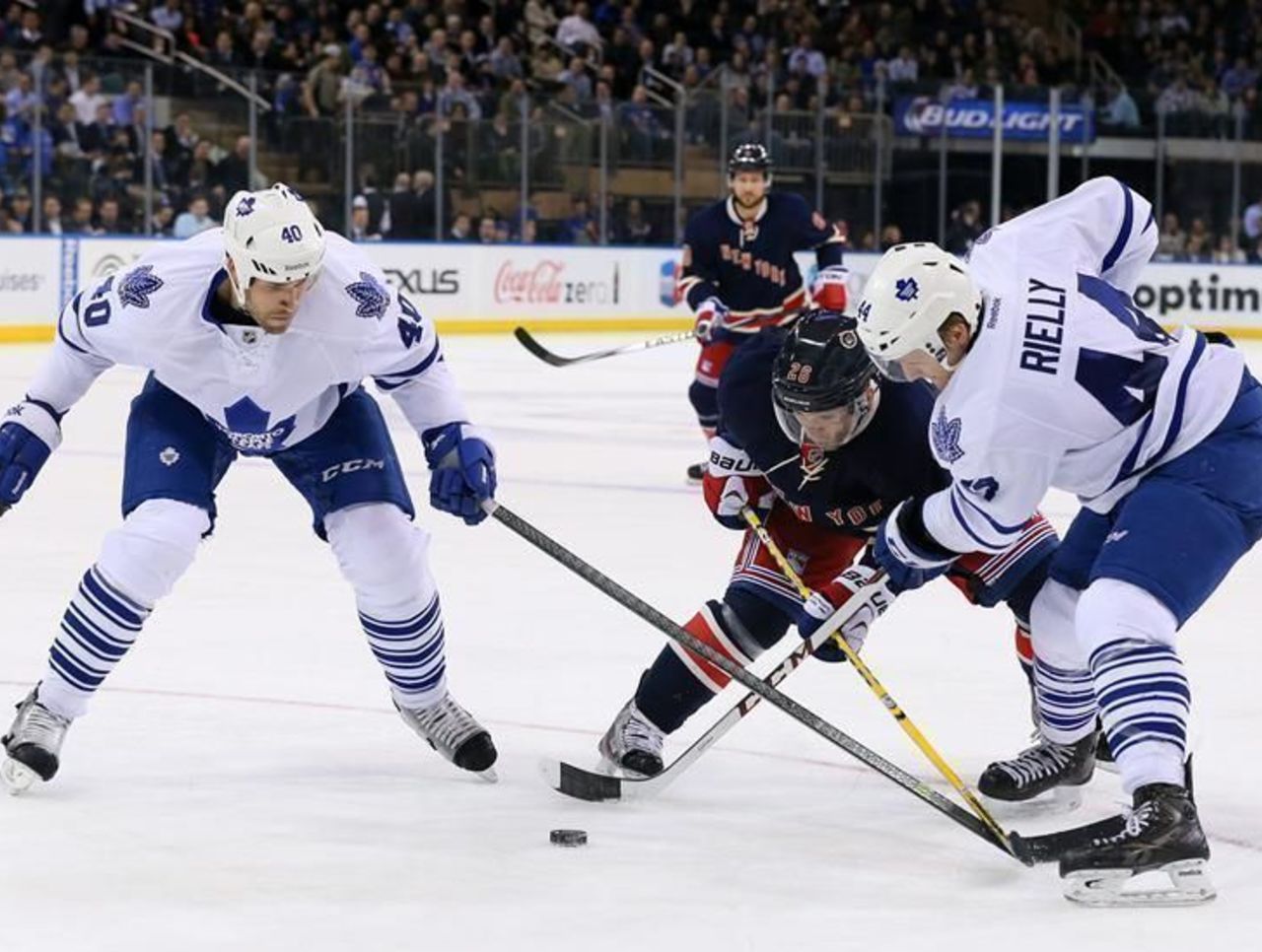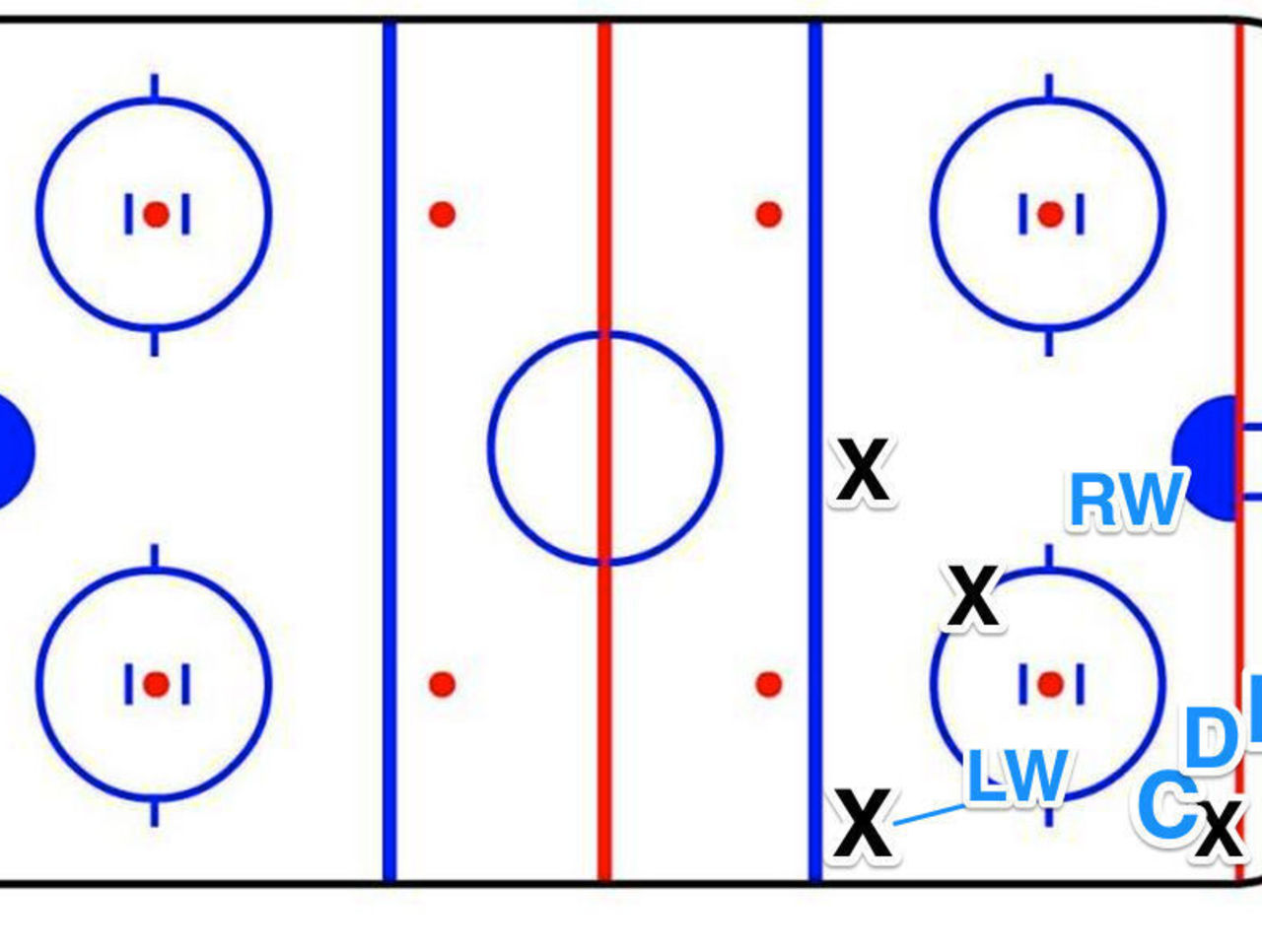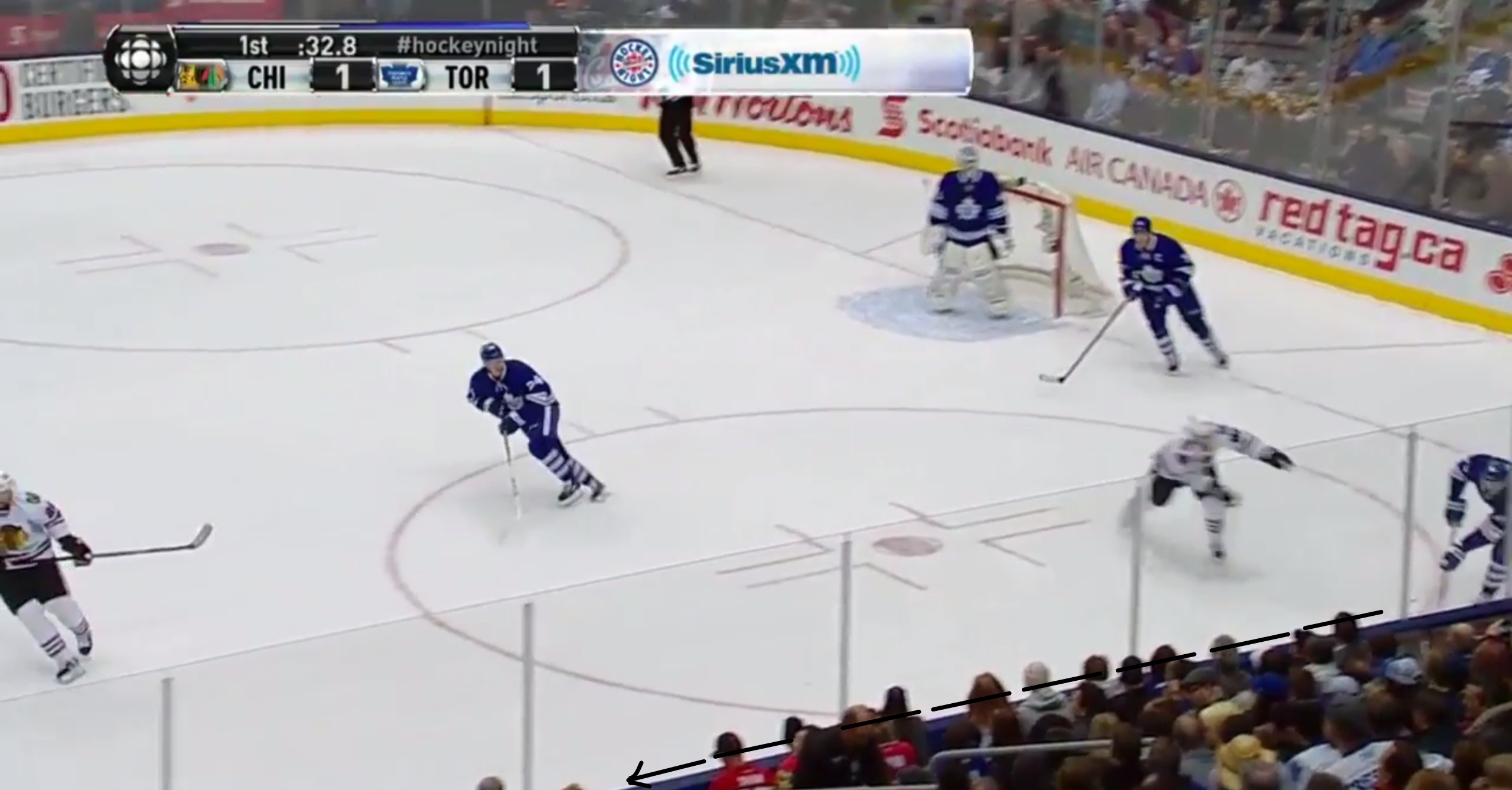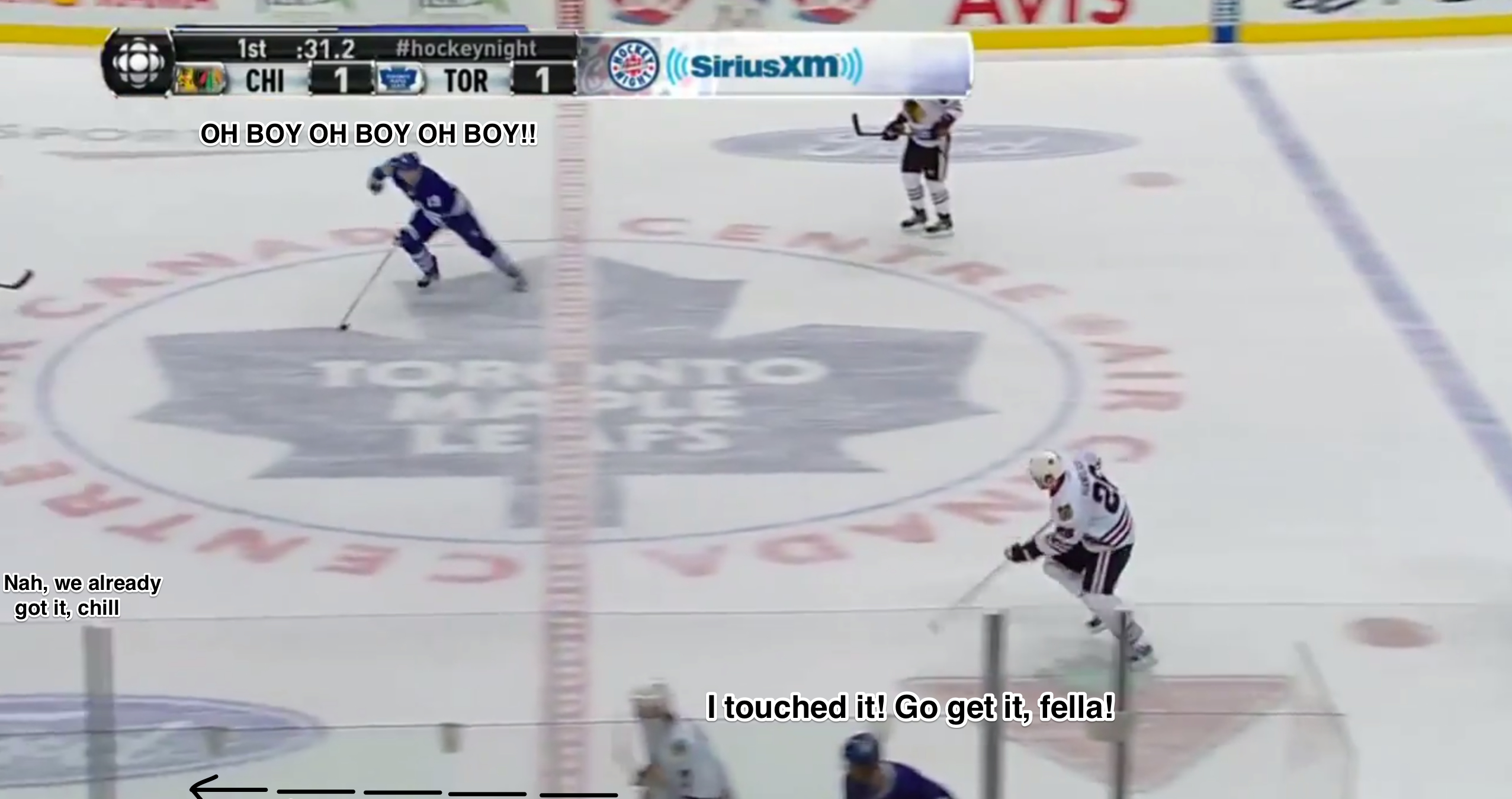Unique Team Traits: The Toronto Maple Leafs “swarm” defense pushed the first domino to disaster
theScore’s multi-part team previews include a look at something that separates each team from the pack. From specific breakouts to powerplay formations and beyond, Justin Bourne and Thomas Drance hope to highlight something you haven’t noticed in the past.
What we noticed
The Leafs’ “swarm” defense brought their wingers low, which created a negative domino effect with other facets of the game
When your goals against per game is worse than teams like Buffalo and Calgary, two teams who committed blatant roster arson in hopes of building something better in the future, something ain’t right. When you manage that feat and you have two tremendous goaltenders in their prime, well, what the hell guys. Pull it together.
The fact of the matter is, you’re going to post a 3.07 goals against per game when you hand out shots like your defensive zone is a frat house. That’s just how hockey works.
It all stemmed from D-zone coverage for the Leafs, where their “swarm” created a domino effect that hampered their ability to exit their zone, left them hemmed in, and tuckered their skaters out.
Shall we?
The numbers

Toronto gave up the most shots in the league by a solid amount, as the permissive Maple Leafs allowed a tiny tick under 36 against per game. That’s eight more then they managed in the offensive zone, which left them with the worst shot differential in the league by a fair margin.
Zone exit data recorded by Corey Sznajder shows that the Maple Leafs also had the third-highest turnover percentage, behind only Carolina and Colorado. That means more zone time against, which partially explains that shot disparity.
Something ain’t right here.
The breakdown

For the bulk of last season, the Leafs played a D-zone system called “the swarm,” which is kind of a wicked name. It can be really effective, but from what I can tell, it’s only effective with disciplined, intelligent players, a la the New Jersey Devils. The younger Oilers and Leafs tried to go Next Level by adopting it, and it caused all sorts of problems.
I’ll save the words explaining hockey’s default D-zone, but it generally looks something like this:

It’s 2-on-2 down low, man-on-man in shooting lanes, with help options when there are breakdowns.
The swarm, or rather, THE SWARM, as I shall call it henceforth because it really does sound like an army operation, is a little more puck hungry, which if you’ve read my Systems Analyst posts in the past, you probably know is asking for trouble.
THE SWARM looks like this:

As in …

Outnumbering your opponent can be a super effective way to acquire the puck, but as you can see around the rest of the zone, if you don’t acquire it, you may have some issues.

Even if you do come out of the battle with the puck, you can see how using all that manpower to do it would hinder your breakout. You’re all tied up in the same part of the ice. It’s not impossible to do, but you certainly need to come out of the pile with the puck cleanly for it to be feasible.
There are also a couple of other minor issues. If you lose a battle, and the opposing team gets a touch and can make a play to a teammate in all that open ice, it’s a free bomb on net.
And where does your opposition know that everyone is open? The POINT, to steal a Don Cherry catchphrase. The wingers have to sag so low to protect the front of the net and to help outnumber skaters on the wall, so when the puck squirts to the top, whether it’s passed intentionally or not, you’re boned.

The system itself doesn’t deserve pure mockery (except when it’s executed poorly, but that’s on the players). Again, New Jersey uses a variation well, and teams like Boston and Detroit use “layers,” which also require sagging wingers.
Part of the issue with Toronto is that they’re so bad at “cutting off the top,” which means that sagging wingers still need to find the bisect between the passing lane from the puck to the D-man, and the shooting lane from the D-man to the net. The Red Wings are adamant about no passes to the points, because sagging wingers then have to run up in the lane, and when the puck moves back low, suddenly you’re running around like someone threw $100 million in fives off the top of the CN Tower.
Here's Joffrey Lupul after a 5-3 loss to St. Louis:
“We didn’t seem to be able to break the cycle, and they were using the points. We play with a lot of people down low in our zone so the points are going to be open. And yet they seemed to be getting the point shots through and a lot of tips and rebounds. Obviously something ... something was wrong there.”
The forwards creep low in case THE SWARM is activated and they have to help (basically any time there’s a semi-loose puck), and opposing teams know that if the puck goes from low to high against the Leafs, they’re laughing.
Below, look at all the ice Phil Kessel (Toronto’s right winger in front) is responsible for. Now imagine the result were an opposing forward to have a split second to find F3 or a D-man.
You can see him shoulder checking, wondering, “How am in charge of F3 in the slot, a D-man, cutting off the top, AND protecting the front of the net at once?”
The result

All this affects more than just the in-zone play. Both D-men being stuffed in one corner eliminates an out for whoever comes up with the puck, which basically leaves our puck carrier with a winger on the strong side who’s already in traffic, and the weak side winger.
A Wednesday article mentioned how the Leafs’ weak side winger doesn’t come across for support (though I think Kessel could handle shooting from the left side if they did), instead flaring out to the far lane, which requires a low-percentage pass, sometimes through traffic.
At times, this forces the strong side winger to provide the only out possible - a stretch play, which pulls the D-man out with him and allows Toronto to use their secret play: “Shoot it at the winger, have him tip it into the opposing zone to negate the icing, and go chase it,” which results in a low-pressure forecheck.


Changing systems is never easy - it takes a while for players in a game that relies so heavily on split-second reactions and instincts to retrain themselves - but the Leafs gotta try. You can’t give up 36 shots a night and think, “We’re just a tweak away.”
Here’s Brendan Shanahan to drive the point home, when he was first hired by the Leafs.
“I think there’s some changes [needed]. I think Randy also recognizes there are some changes to the system that need to occur. Specifically in our defensive zone. Whether the Leafs manage to get into the playoffs this year or not, I agree with many of the fans that – and I don’t think I’m saying anything shocking, it’s not a revelation – to be outshot that often, there’s something wrong.”
Yep. There sure is.
HEADLINES
- Seguin expected to miss rest of season with ACL injury
- Projecting Canada's 2026 Olympic men's hockey roster
- Olympic rink expected to be smaller than NHL: 'Don't know how that happened'
- Top Shelf: Playing trade matchmaker for Stanley Cup contenders
- Hart victorious in Vegas debut with shootout win vs. Blackhawks